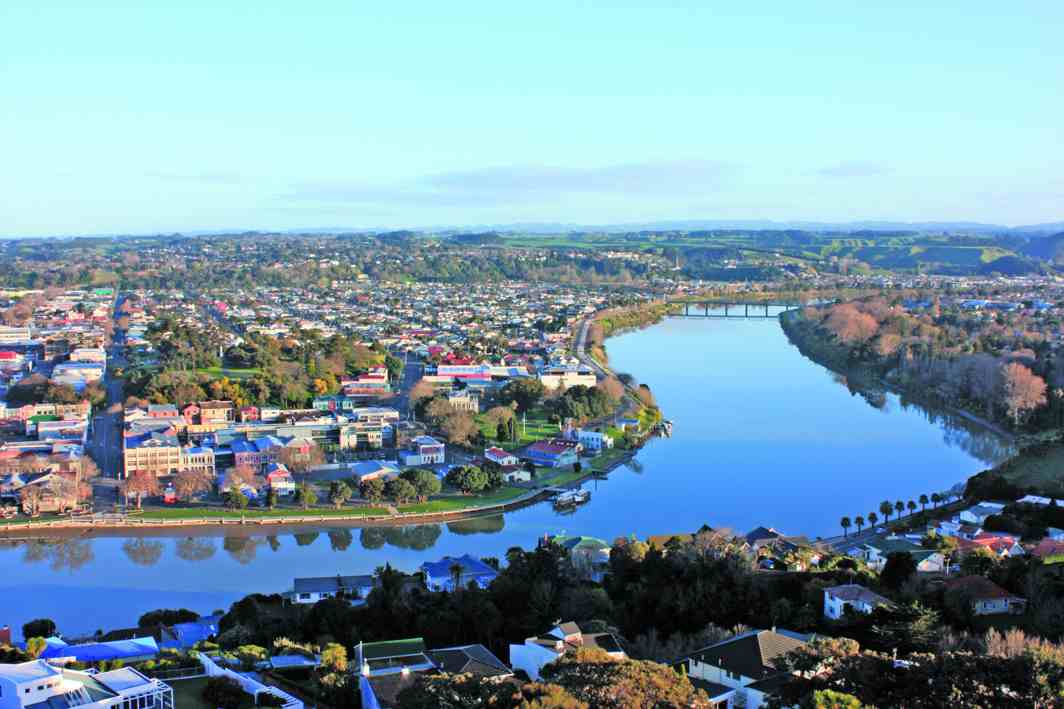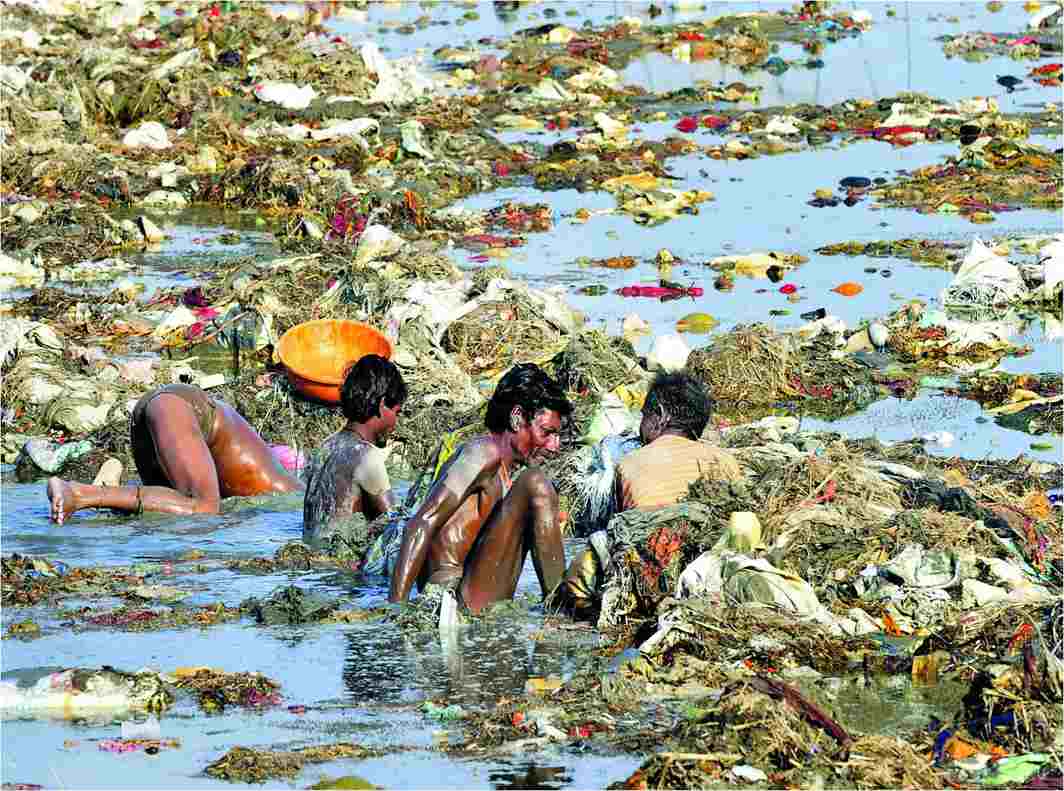Above: Heavy encroachment spills onto the banks of Alaknanda and Bhagirathi in Devprayag. Photo: Anil Shakya
In two reassuring moves, both the NGT and the apex court have given orders regarding this sacred river to stem its pollution and prevent needless prosecution of officials who are in charge of it
~By Ramesh Menon
Two moves regarding the Ganga, one by the Supreme Court and the other by the National Green Tribunal (NGT), have come as a relief for those concerned about the status of this sacred river. While the NGT in a landmark order banned the dumping of any waste within 500 meters of Ganga’s shores, the Supreme Court stayed the judgment of the Uttarakhand High Court that had granted living entity status to this river and the Yamuna. This would have led to the prosecution of government officials overlooking the process of the river being polluted.
The NGT order said that those violating the rule of dumping of waste would now have to cough up Rs 50,000. Tanneries were one of the major causes of pollutants in Uttar Pradesh as they directly let their untreated effluents flow into the river. The NGT has directed the UP government to shift them to areas away from the river. It has also asked for guidelines to be set up by both UP and Uttarakhand to ensure that religious activities held on the ghats of the river and its tributaries are regulated.

It gave a deadline of just six weeks to UP to relocate tanneries from Jajmau to Unnao or any other place it wants. There are around 450 tanneries in UP. This is the first time such a stricture has been passed. Earlier, the NGT had pulled up government officials in charge of dealing with pollution and had said that a huge amount of money had been wasted in the name of cleaning the river.
The water is pure when it starts its decent from the Himalayas but gradually as it meanders through North India, the Ganga has to deal with around 4,800 million litres of untreated effluents from 764 industrial units and other urban bodies. It also deals with a high level of faecal coliform bacteria due to open defecation. At certain stretches, the colour of the water changes due to the sewage and effluents. In some areas, the river is covered with toxic foam and is unable to maintain aquatic life.
SC STAY
Meanwhile, the Supreme Court stayed an Uttarakhand order three months ago, which gave legal rights to the river like any human being and wanted both the rivers to be protected. It had observed that despite numerous orders and attempts, the rivers continued to be heavily polluted. Though many activists and lawyers had remarked that it was a landmark judgment that aimed to fix responsibility and ensure action, it was actually not implementable.

Environmentalists had warned that both the rivers were dying. A few days before the Uttarakhand judgment, New Zealand had passed a landmark bill making the Whanganui River a living entity with full legal rights. Though this was the first time that such a judgment in India had been delivered, other countries like Ecuador and New Zealand had codified the concept of nature having legal rights. The broad idea was that nature should not be looked upon like a property that has no rights to exist.
The Uttarakhand High Court had appointed the advocate-general of the state, among others, to act like guardians and ensure the well-being of the rivers.
The Supreme Court had been hearing a PIL by advocate Lalit Miglani who had sought removal of encroachments on the banks of the river. The Court ordered that illegal mining be stopped and called for closing down of 150 defaulting commercial establishments. It also wanted a fine imposed on those defecating, littering or urinating within a radius of 500 metres of the river.
ACCOUNTABILITY FACTOR
The Uttarakhand government had challenged the order in the Supreme Court as it wondered how it alone could be accountable for the state of the rivers and its tributaries when they passed through several states. Uttarakhand minister Madan Kaushik had then pointed out that there was ambiguity regarding the accountability of damage done to these rivers.
The Uttarakhand High Court had designated an authority to function like a guardian to the rivers and also file cases on their behalf if they were being abused or polluted. The Court had appointed the director of the Namami Gange programme, the Uttarakhand chief secretary and the advocate-general of Uttarakhand who like guardians, were expected to ensure the well-being of the rivers, and serve as “parents” for Ganga and Yamuna. “The Advocate General shall represent at all legal proceedings to protect the interest of Rivers Ganges and Yamuna,” the order had said. Sources said that this was almost impossible as government officials would on a daily basis be held responsible for the pathetic condition of the rivers.

REAL CHANGE
Though the judgment was unique in its own way, the fact is that India’s dying rivers can only be saved if there is political will to slap strict punishment on defaulters defiling them. That is sadly not there and that is why thousands of crores spent in the last few decades on cleaning programmes have not helped at all. These two rivers are among the most polluted rivers in the world. Government officials have been pulled up numerous times by the National Green Tribunal for not showing the kind of commitment needed to save the Ganga and the Yamuna.
The Uttarakhand government had challenged the order in the apex court asking how it alone could be accountable when the rivers passed through several states.
SK Sarkar, Director, Water Resources, TERI, said that there are numerous challenges to ensure that responsibility is fixed as there are many players polluting the rivers like industries, municipal bodies, institutions, millions of villagers who live beside the river and so on.
Though the NDA government has set aside $3.06 billion to clean the river between 2015 and 2020, only about $205 million had been spent between April 2015 and March 2017, according to officials overlooking the National Mission for Clean Ganga, which is one of Prime Minister Narendra Modi’s pet projects. Whether the tough stand taken by the NGT will move the state governments to act, remains to be seen.
MC Mehta who for decades has been fighting for environmental safeguards told India Legal that the government can still do a lot as there are many laws to protect the rivers but no one was interested in implementing them. There is no political will, he said.
Without that and the will of the people to save rivers, there is little hope in India.


